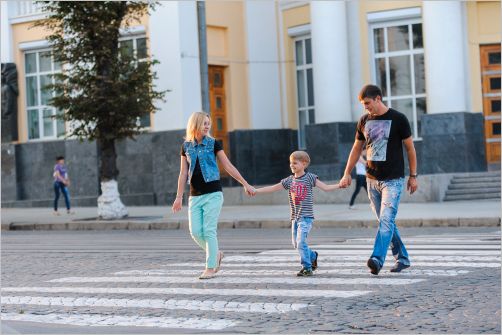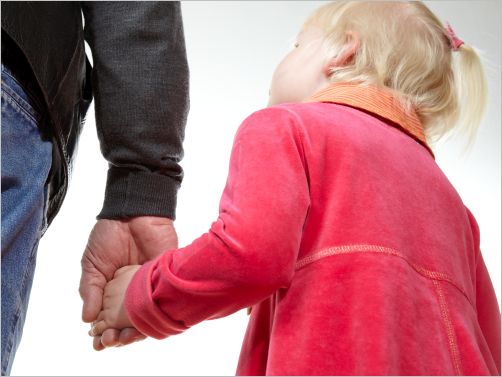Child Safety
Child safety is one of our most important goals as parents. It’s a dangerous world out there, and our children are vulnerable and utterly dependent--- on us. We’d all like superhero powers and the ability to guard and protect our children from any possible danger, every step they take, but somehow those powers are not for sale anyway.
How can you keep your children safe always, both when you are with them and when you aren’t? A great deal of child safety lies in appropriate training: training your child how to make the right decision in dangerous or compromising situations even if you can’t be by his side.
There are many facets of your child's safety, so here we’ll focus on four aspects you should work on with your child.
• Traffic
• Stranger Danger
• Getting Lost

Traffic & Child Safety
Your toddler may not be crossing any streets by himself yet, but that doesn’t mean you don’t need you to teach him about how to be safe in traffic. Make every street-crossing into a child safety learning opportunity. Whatever street you cross—even a no-traffic residential road in your cul-de-sac—stop and look both ways before crossing, and have your child look with you. Teach your child to always hold a hand while crossing a street, and that he needs to keep hold of your hand and keep moving until he is all the way on the other side.
If you have pedestrian street lights in your area, teach him how they work. Make a practice of asking him what the light is saying whenever you come to one of those lights. If it is red, and you stop, ask him to tell you when the light turns green for go.
Teach him that play-areas and car-areas don’t mix; playing is for sidewalks, parks, and yards, car territory is parking lots and streets.
Stranger Danger

In terms of stranger danger, toddlers are the most vulnerable of children. They’ve grown more independent than they were in babyhood, and are no longer ‘attached at the hip’ to mom or dad. At the same time, they don’t yet have the knowledge, worldy wisdom or strength that they’ll get when they get older. That’s why it is especially important to toddler safety that you talk to your toddler about strangers and make sure he knows what to do in any circumstance.
Make sure he knows he has a listening ear, too, if he has worries or fears about anyone whatsoever, and never belittle his intuitions about ‘bad people’ even if they are people you yourself consider friends.
• Teach your child that he mustn’t talk to strangers unless you talk to them first—the exception are policemen, teachers, or store clerks.
• Teach him that he must never, never get in any car with someone, stranger or not, unless you have given permission.
• Teach him that he must never follow a stranger, and if someone grabs his hand or tries to take him away he should kick, scream, bite them, try to run away, and call any people nearby to help him.
• Tell him he should never accept candy or any other present from anybody without permission from you.
• Tell him that if anyone or any situation makes him feel afraid, he should find you or another trusted adult and tell them right away.
Getting Lost
You hope your child will never be in a situation where she gets lost—but if she does, it’s important that she is prepared. Make sure your child knows her name, your name, and her address. If she has a good memory, have her memorize your phone number as well.
If you’re going into a crowded place or taking a long trip, you may want to have your child wear a dog tag with her name, her address, and a contact phone number. You can buy simple tags, with a handwritten card in a plastic case, that hang around a child’s neck; others will clip onto your child’s clothing.
Make sure your child knows you expect her to stay with you (or another friend, if appropriate) the whole time. Talk about the kind of people she can ask for help from if she can’t find mommy—a policeman, the zoo attendant, a cashier. Make sure she knows it is not her responsibility to find you—if she stays still, you will find her.
Don’t push child safety under the rug. It may not be fun talking about dangerous or scary situations with our little ones, but it is important. If it is done right it need not be frightening to your child—instead, your child can feel empowered knowing you has the tools to make the right decisions whatever happens. So talk with your toddler today. Keeping the communication channels open is the single most important prerequisite for child safety.
New! Comments
Have your say about what you just read! Leave me a comment in the box below.